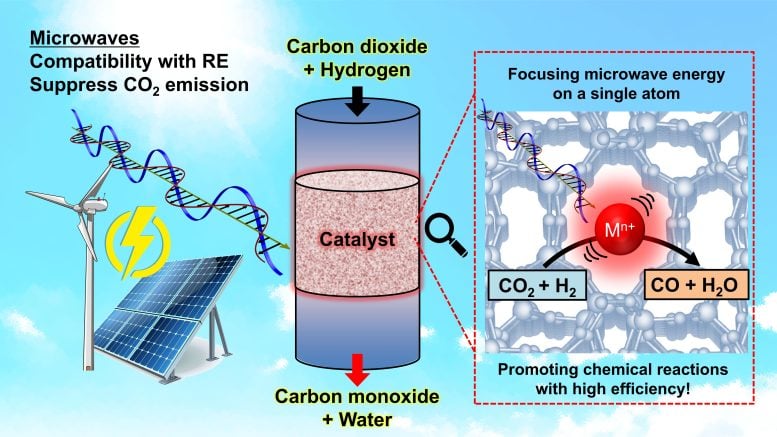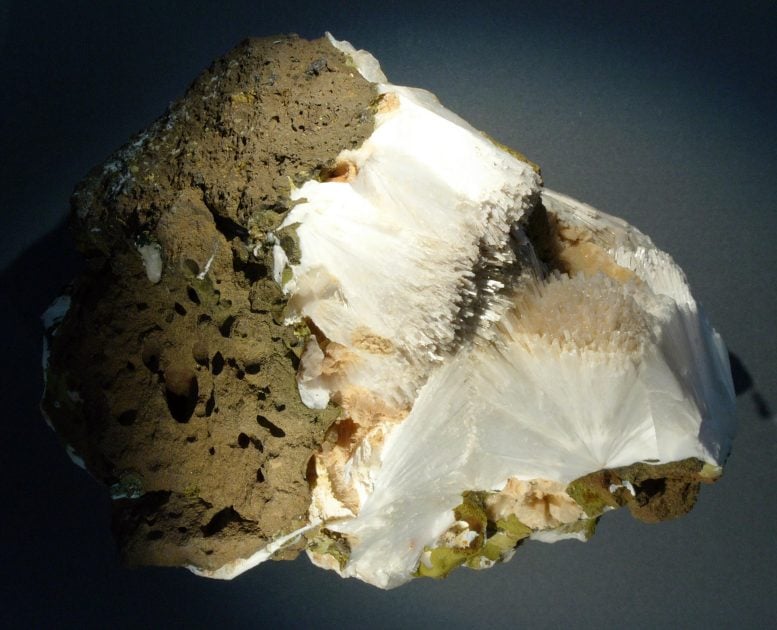New Microwave Technique Could Transform CO₂ into Fuel Far More Efficiently
University of Tokyo, November 19, 2025

A groundbreaking microwave-based heating method developed by researchers at the University of Tokyo could dramatically improve the efficiency of chemical reactions and open new possibilities for producing greener fuels and recycling carbon dioxide (CO₂).
Precision Heating for Industrial Chemistry
Many industrial chemical processes rely on heat, but conventional heating methods often waste energy by warming large areas that do not directly participate in reactions. The research team, led by Lecturer Fuminao Kishimoto in the Department of Chemical System Engineering, developed a system that focuses energy only where it is needed.
This approach uses microwaves—similar to those in household ovens—to selectively excite specific elements within the reaction materials. The system has demonstrated energy efficiencies approximately 4.5 times higher than traditional methods.
“In most chemical reactions, only very small, localized regions involving a few atoms or molecules actually require energy,” said Kishimoto. “Traditional heating spreads thermal energy across the entire reactor, which is wasteful. We realized microwaves could concentrate energy on single atomic sites, much like a microwave oven heats food.”

Ideally the microwave reactions can be driven by green energy, in which case the system could help reduce carbon dioxide by converting it into other useful chemicals. Credit: 2025 Kishimoto et al. CC-BY-ND
How It Works
Unlike conventional microwave ovens, which target polar water molecules at 2.45 gigahertz, the researchers tuned their microwaves to 900 megahertz. This frequency is optimal for exciting zeolite—a porous material that absorbs and transfers heat efficiently.
Inside the zeolite cavities, indium ions act like antennas that capture microwave energy and generate heat. The heat is then transferred to chemicals passing through the porous structure, enabling highly localized and efficient reactions. Achieving this precision took four years of development at Japan’s large synchrotron radiation facility, SPring-8.
Applications in Fuel Creation and Carbon Recycling
By selectively delivering heat, reactions that typically require high temperatures, such as water decomposition or methane conversion, can occur under milder conditions. Zeolite pore sizes can be adjusted to optimize reaction efficiency and selectivity.
The technique also offers potential for carbon capture, converting CO₂ into useful chemicals, and even for recycling plastics more efficiently.

This material looks like a rock covered in ice, but under the microscope you would see a spongelike network. This is key to the experiments as the cavities can be filled with specific ions to create heat from microwaves. As the material is porous, fluids can flow through it absorbing the heat to enable reactions. Credit: 2025 Hannes Grobe CC-BY-SA-2.5
Challenges Ahead
Scaling the method from laboratory experiments to industrial production remains a challenge. The materials used are complex and expensive to produce, temperature measurements at atomic scales are difficult, and further improvements are needed to reduce heat and electrical losses.
“We aim to expand this concept to other critical chemical reactions and optimize catalysts for durability and scalability,” said Kishimoto. “Pilot-scale demonstrations could occur within the next decade, with broader adoption depending on technological and energy infrastructure development. We are seeking corporate partners for joint development.”
Reference: Ishibashi, R., Kishimoto, F., Yoshioka, T., Yamada, H., Muraoka, K., Ina, T., Taniguchi, H., Nakayama, A., Wakihara, T., & Takanabe, K. (2025). Focused thermal energy at atomic microwave antenna sites for ecocatalysis. Science Advances.






